Effect of Number of Variants of Zirconium Hydride on Grain Growth of Zirconium
Abstract
1. Introduction
2. Simulation Details
2.1. Phase-Field Model for Grain Growth with Hydrides
2.2. Numerical Details
2.3. Structural Variations and Morphology of -Hydride
3. Classification of –Hydrides in –Zr Matrix
4. Results And Discussion
5. Conclusions
Author Contributions
Funding
Conflicts of Interest
References
- Golden, L.B.; Lane, I.R.; Acherman, W.L. Corrosion resistance of titanium, zirconium, and stainless steel. Ind. Eng. Chem. 1952, 44, 1930–1939. [Google Scholar] [CrossRef]
- Lustman, B.; Kerze, F. The Metallurgy of Zirconium; McGraw-Hill: New York, NY, USA, 1955; Volume 4. [Google Scholar]
- Filburn, T.; Bullard, S. Nuclear Fuel, Cladding, and the “Discovery” of Zirconium. In Three Mile Island, Chernobyl and Fukushima; Springer: Berlin, Germany, 2016; pp. 105–114. [Google Scholar]
- Kim, S.S.; Lim, S.; Ahn, D.H.; Lee, G.G.; Chang, K. Effect of Inhomogeneous Nucleation of Hydride at α/β Phase Boundary on Microstructure Evolution of Zr–2.5 wt% Nb Pressure Tube. Met. Mater. Int. 2019, 25, 838–845. [Google Scholar] [CrossRef]
- Shin, W.; Chang, K. Phase-field modeling of hydride reorientation in zirconium cladding materials under applied stress. Comput. Mater. Sci. 2020, 182, 109775. [Google Scholar] [CrossRef]
- Colas, K.B.; Motta, A.T.; Daymond, M.R.; Almer, J.D. Effect of thermo-mechanical cycling on zirconium hydride reorientation studied in situ with synchrotron X-ray diffraction. J. Nucl. Mater. 2013, 440, 586–595. [Google Scholar] [CrossRef]
- Kim, J.S.; Kim, Y.J.; Kook, D.H.; Kim, Y.S. A study on hydride reorientation of Zircaloy-4 cladding tube under stress. J. Nucl. Mater. 2015, 456, 246–252. [Google Scholar] [CrossRef]
- Puls, M.P. Review of the thermodynamic basis for models of delayed hydride cracking rate in zirconium alloys. J. Nucl. Mater. 2009, 393, 350–367. [Google Scholar] [CrossRef]
- Smith, C.S. Grains, phases, and interfaces: An introduction of microstructure. Trans. Metall. Soc. AIME 1948, 175, 15–51. [Google Scholar]
- Westlake, D. The habit planes of zirconium hydride in zirconium and zircaloy. J. Nucl. Mater. 1968, 26, 208–216. [Google Scholar] [CrossRef]
- Nes, E.; Ryum, N.; Hunderi, O. On the Zener drag. Acta Metall. 1985, 33, 11–22. [Google Scholar] [CrossRef]
- Chang, K.; Feng, W.; Chen, L.Q. Effect of second-phase particle morphology on grain growth kinetics. Acta Mater. 2009, 57, 5229–5236. [Google Scholar] [CrossRef]
- Chang, K.; Chen, L.Q. Quantitative evaluation of particle pinning force on a grain boundary using the phase-field method. Model. Simul. Mater. Sci. Eng. 2012, 20, 055004. [Google Scholar] [CrossRef]
- El Chamaa, S.; Patel, M.; Davies, C.; Wenman, M.R. The Effect of Grain Boundaries and Second-Phase Particles on Hydride Precipitation in Zirconium Alloys. MRS Adv. 2018, 3, 1749–1754. [Google Scholar] [CrossRef]
- Qin, W.; Kumar, N.K.; Szpunar, J.; Kozinski, J. Intergranular δ-hydride nucleation and orientation in zirconium alloys. Acta Mater. 2011, 59, 7010–7021. [Google Scholar] [CrossRef]
- Chen, L.Q.; Yang, W. Computer simulation of the domain dynamics of a quenched system with a large number of nonconserved order parameters: The grain-growth kinetics. Phys. Rev. B 1994, 50, 15752. [Google Scholar] [CrossRef] [PubMed]
- Vedantam, S.; Patnaik, B. Efficient numerical algorithm for multiphase field simulations. Phys. Rev. E 2006, 73, 016703. [Google Scholar] [CrossRef]
- Moelans, N.; Blanpain, B.; Wollants, P. A phase field model for the simulation of grain growth in materials containing finely dispersed incoherent second-phase particles. Acta Mater. 2005, 53, 1771–1781. [Google Scholar] [CrossRef]
- Chang, K.; Moelans, N. Effect of grain boundary energy anisotropy on highly textured grain structures studied by phase-field simulations. Acta Mater. 2014, 64, 443–454. [Google Scholar] [CrossRef]
- Krill Iii, C.; Chen, L.Q. Computer simulation of 3-D grain growth using a phase-field model. Acta Mater. 2002, 50, 3059–3075. [Google Scholar] [CrossRef]
- Dagum, L.; Menon, R. OpenMP: An industry standard API for shared-memory programming. IEEE Comput. Sci. Eng. 1998, 5, 46–55. [Google Scholar] [CrossRef]
- Heo, T.W.; Colas, K.B.; Motta, A.T.; Chen, L.Q. A phase-field model for hydride formation in polycrystalline metals: Application to δ-hydride in zirconium alloys. Acta Mater. 2019, 181, 262–277. [Google Scholar] [CrossRef]
- Doherty, R. Role of interfaces in kinetics of internal shape changes. Met. Sci. 1982, 16, 1–14. [Google Scholar] [CrossRef]
- Szpunar, J.A.; Qin, W.; Li, H.; Kumar, N.K. Roles of texture in controlling oxidation, hydrogen ingress and hydride formation in Zr alloys. J. Nucl. Mater. 2012, 427, 343–349. [Google Scholar] [CrossRef]
- Chun, Y.; Hwang, S.; Kim, M.; Kwun, S.; Kim, Y. Effect of Mo on recrystallization characteristics of Zr–Nb–(Sn)–Mo experimental alloys. J. Nucl. Mater. 1999, 265, 28–37. [Google Scholar] [CrossRef]
- Hiwarkar, V.; Sahoo, S.; Samajdar, I.; Narasimhan, K.; Krishna, K.M.; Dey, G.; Srivastava, D.; Tewari, R.; Banerjee, S. Annealing of cold worked two-phase Zr-2.5 Nb—Associated microstructural developments. J. Nucl. Mater. 2009, 384, 30–37. [Google Scholar] [CrossRef]
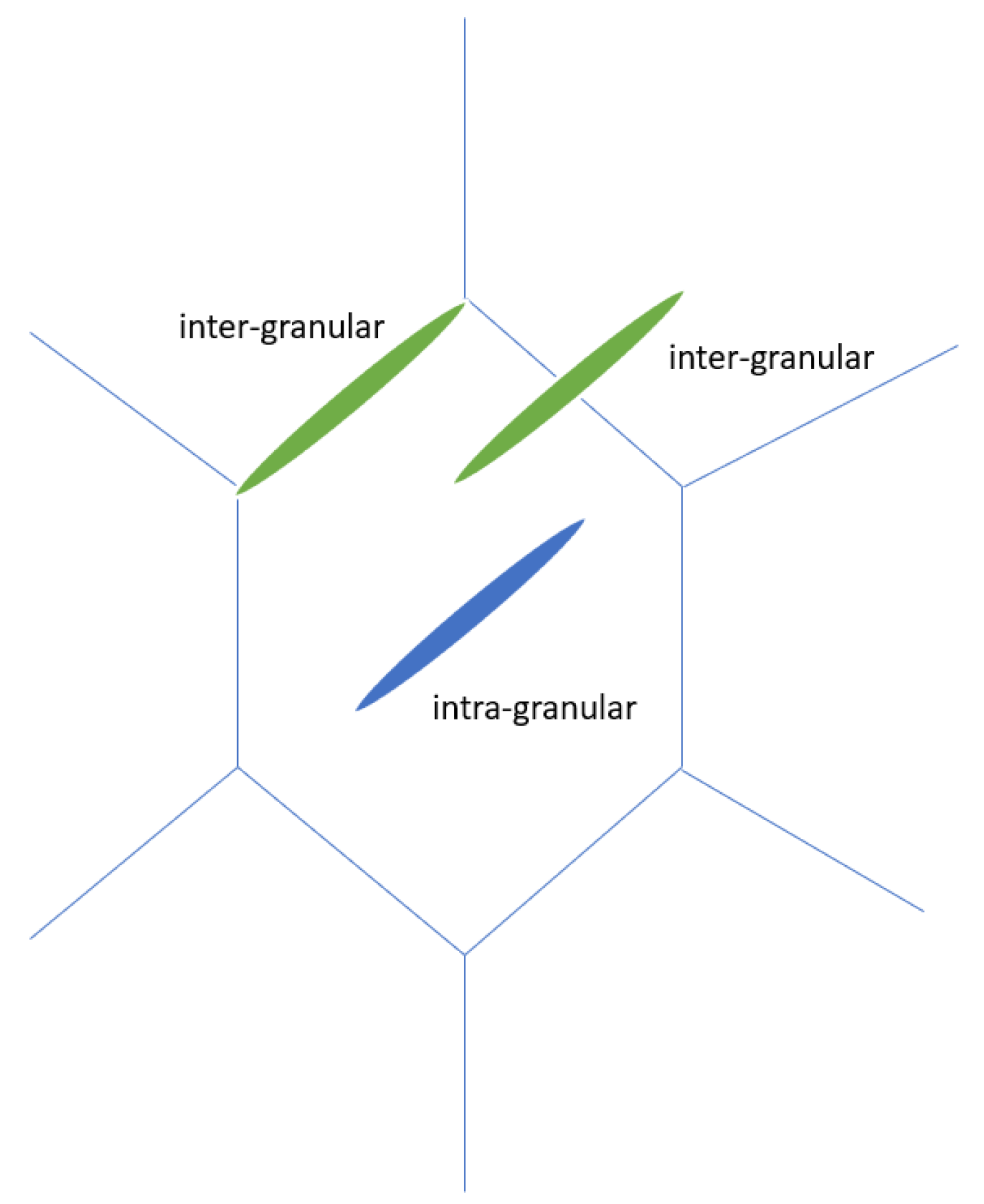
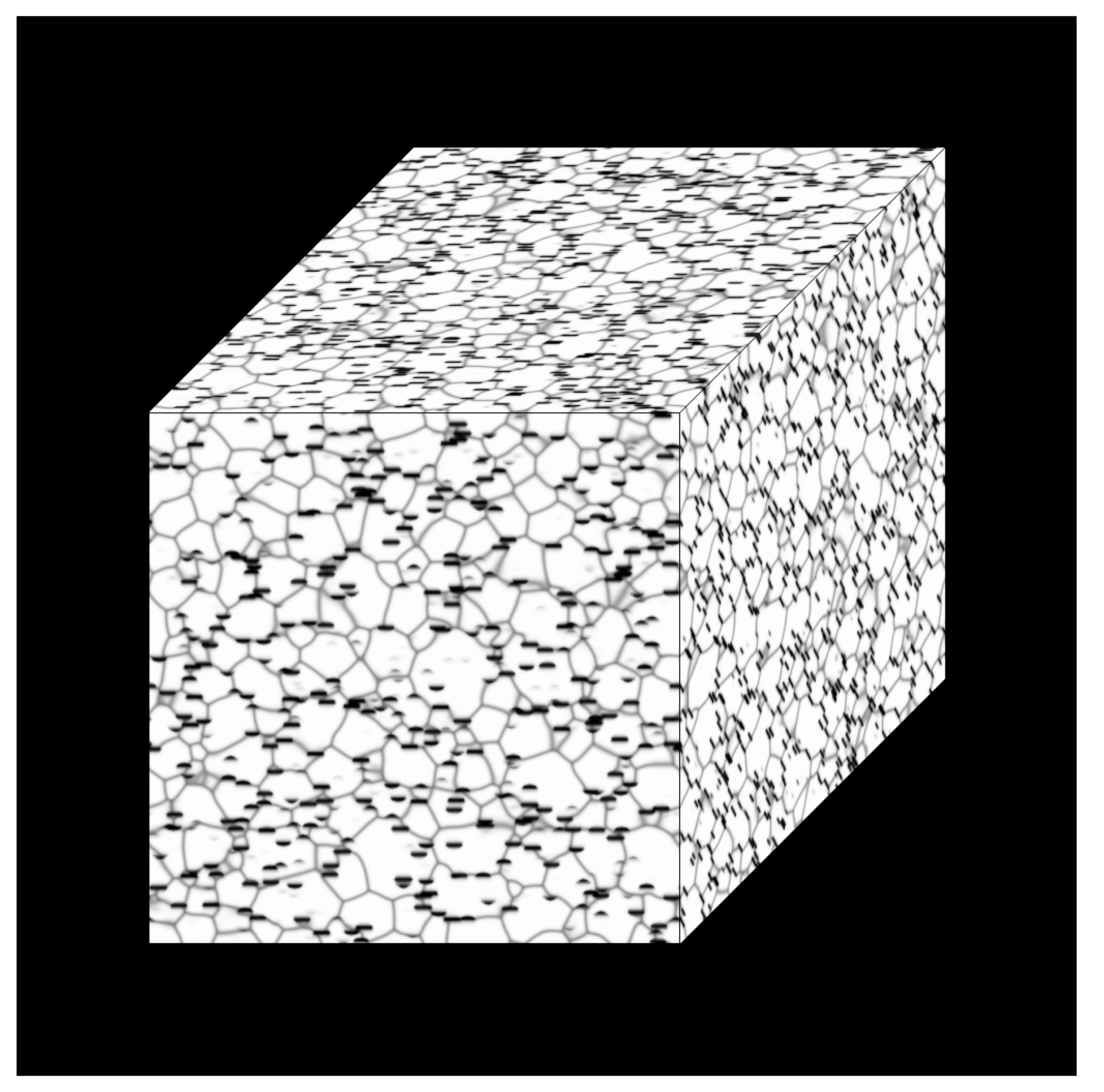
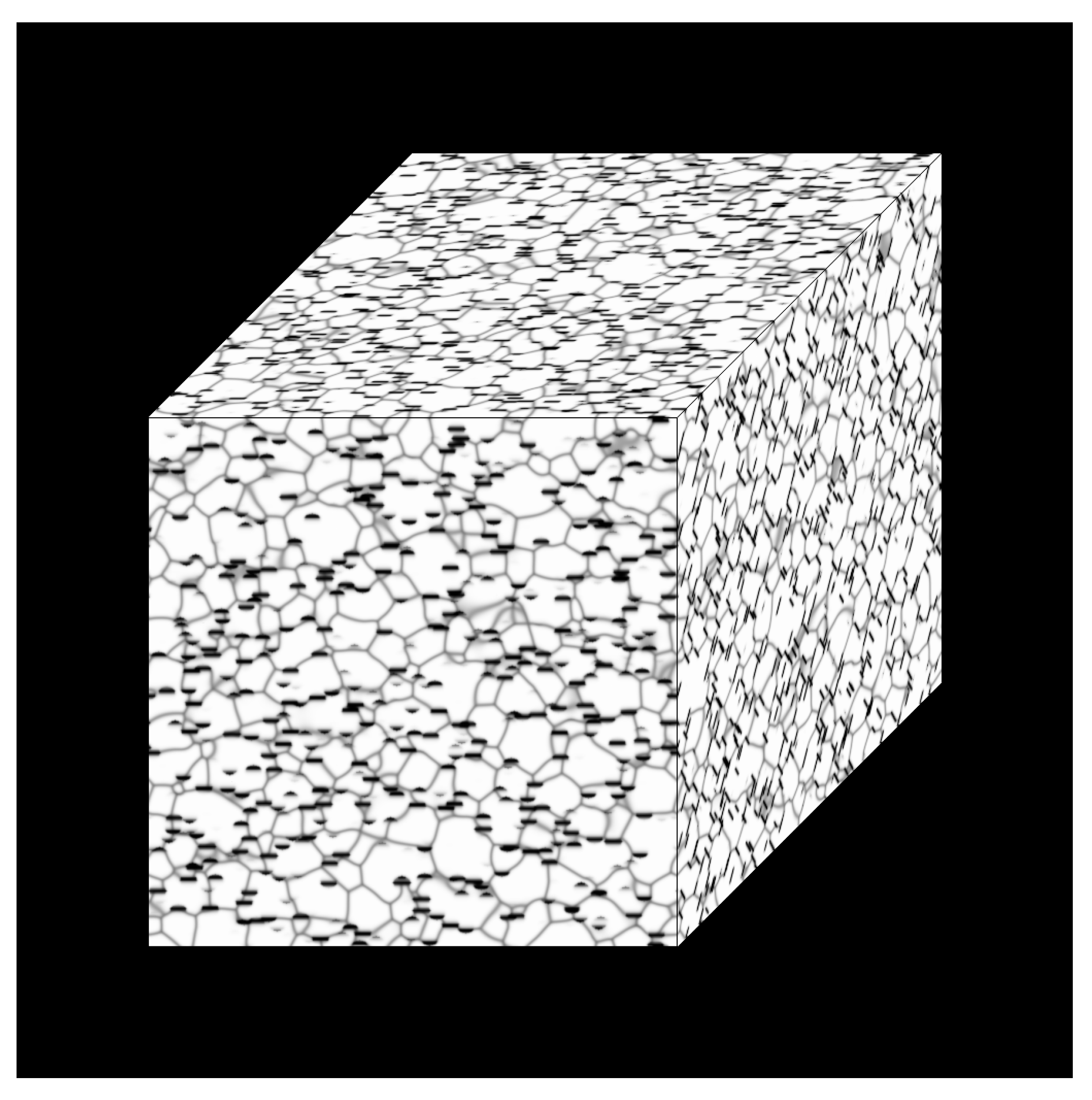
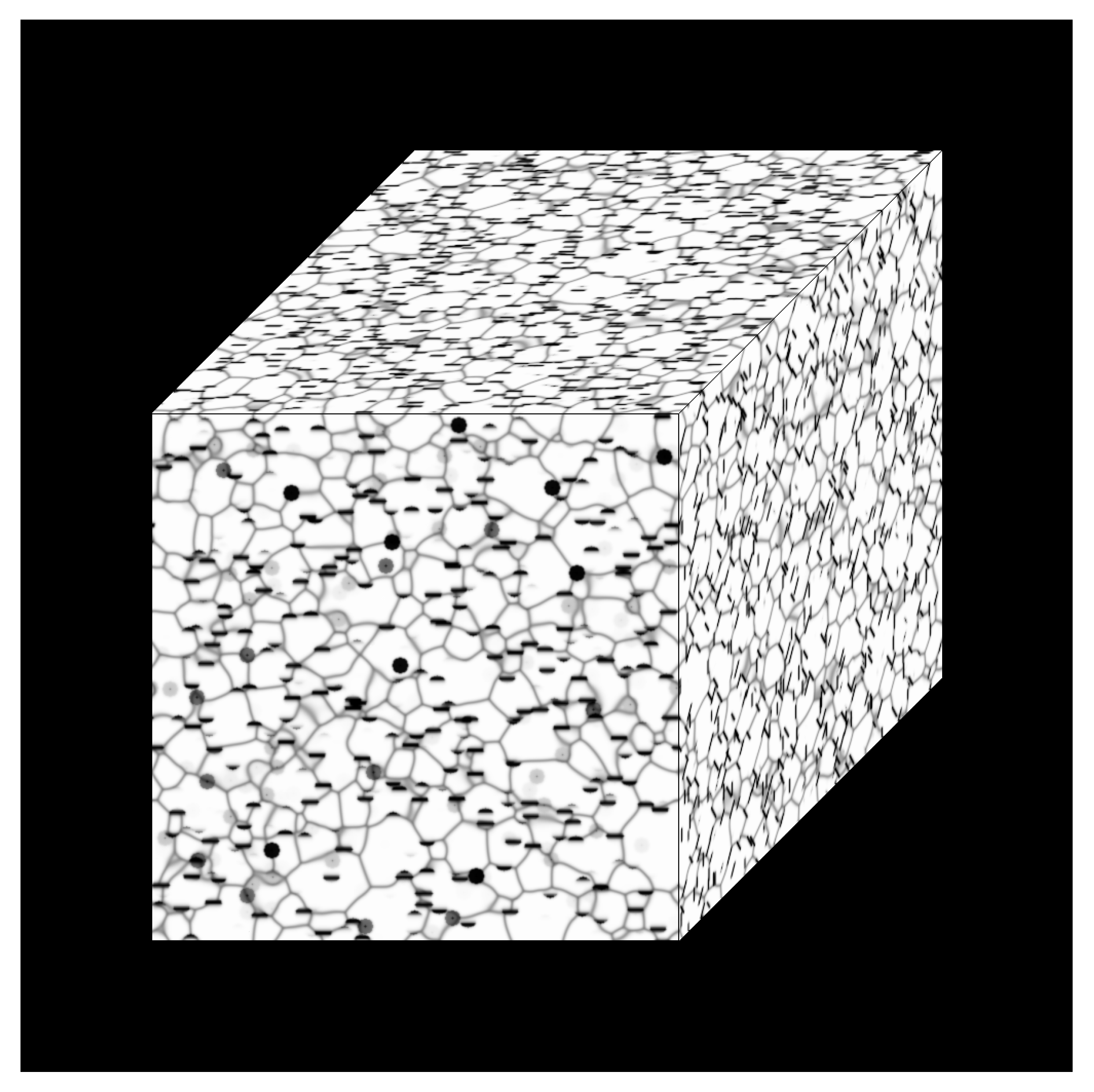
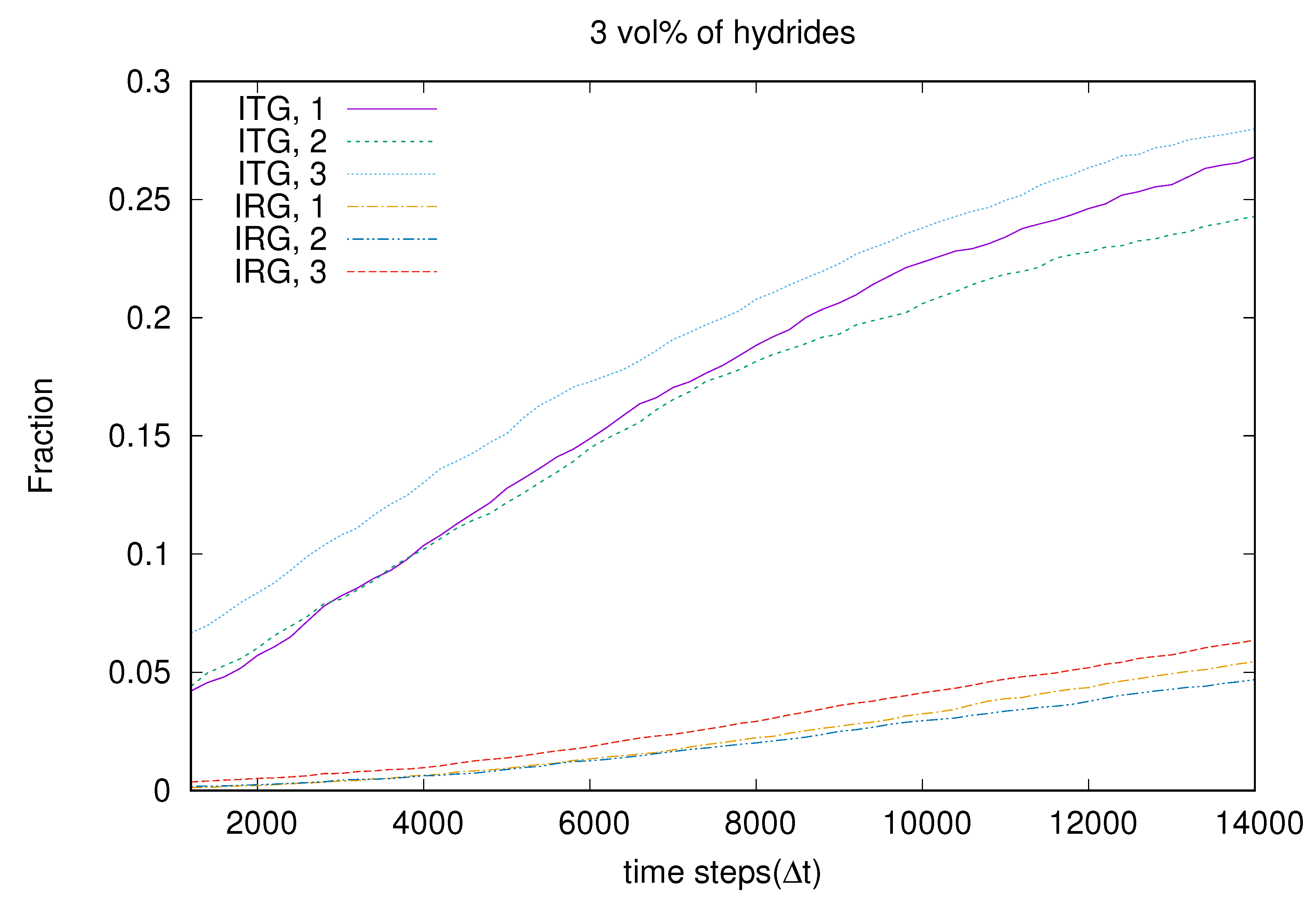
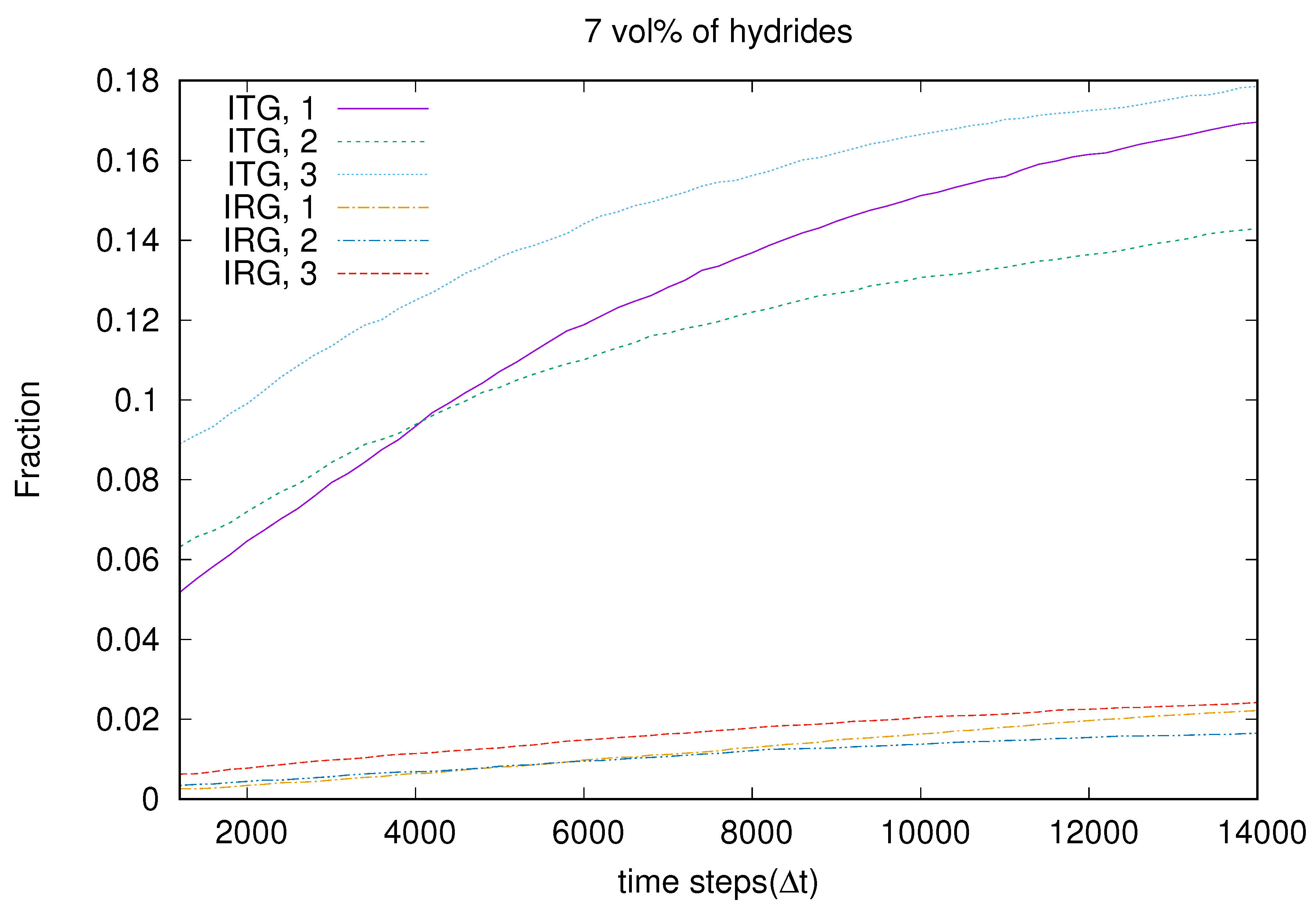


© 2020 by the authors. Licensee MDPI, Basel, Switzerland. This article is an open access article distributed under the terms and conditions of the Creative Commons Attribution (CC BY) license (http://creativecommons.org/licenses/by/4.0/).
Share and Cite
Yoon, B.; Chang, K. Effect of Number of Variants of Zirconium Hydride on Grain Growth of Zirconium. Metals 2020, 10, 1155. https://doi.org/10.3390/met10091155
Yoon B, Chang K. Effect of Number of Variants of Zirconium Hydride on Grain Growth of Zirconium. Metals. 2020; 10(9):1155. https://doi.org/10.3390/met10091155
Chicago/Turabian StyleYoon, Bohyun, and Kunok Chang. 2020. "Effect of Number of Variants of Zirconium Hydride on Grain Growth of Zirconium" Metals 10, no. 9: 1155. https://doi.org/10.3390/met10091155
APA StyleYoon, B., & Chang, K. (2020). Effect of Number of Variants of Zirconium Hydride on Grain Growth of Zirconium. Metals, 10(9), 1155. https://doi.org/10.3390/met10091155




